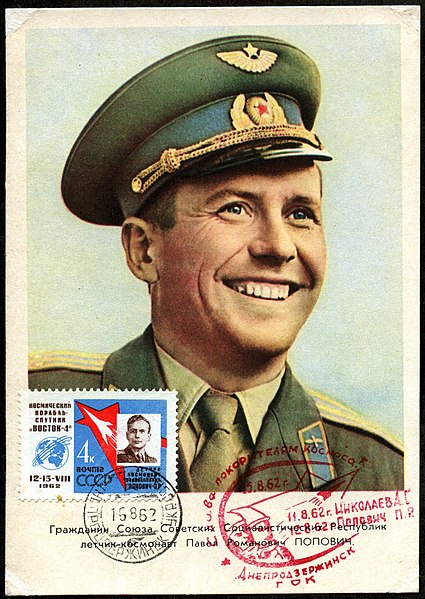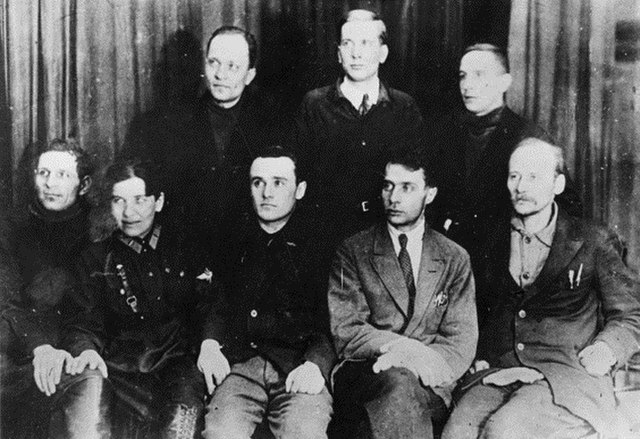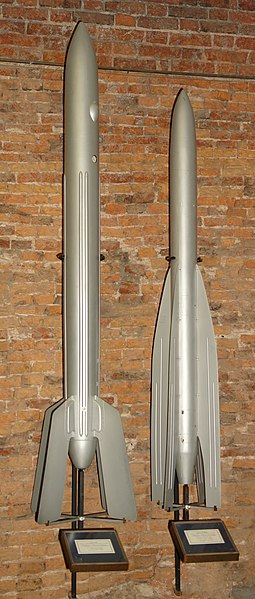Vostok 3 and Vostok 4 were Soviet space program flights in August 1962, intended to determine the ability of the human body to function in conditions of weightlessness, test the ground control capability to launch and manage two separate, concurrent flights, and test the endurance of the Vostok 3KA spacecraft over longer flights. Cosmonaut Andriyan Nikolayev orbited the Earth 64 times in Vostok 3 over nearly four days in space, August 11–15, 1962, a feat which would not be matched by NASA until the Gemini program (1965–1966). Pavel Popovich was launched on Vostok 4 on August 12, and made 48 Earth orbits. The two capsules were launched on trajectories that brought the spacecraft within approximately 6.5 km (4.0 mi) of each another.
Andryan G Nikolaiev / Pavel PopovichVostok programme Crewed flights← Vostok 2Vostok 5 →
Image: Convert ru kosmos 174
Model of the Vostok capsule with its carrier rocket's upper stage
The Soviet space program was the national space program of the Union of Soviet Socialist Republics (USSR), active from 1955 until the dissolution of the Soviet Union in 1991.
Soviet cosmonaut Yuri Gagarin—the first man in the outer space.
Members of the Group for the Study of Reactive Motion (GIRD). 1931. Left to right: standing I.P. Fortikov, Yu A Pobedonostsev, Zabotin; sitting: A. Levitsky, Nadezhda Sumarokova, Sergei Korolev, Boris Cheranovsky, Friedrich Zander
Rocket 09 (left) and 10 (GIRD-09 and GIRD-X). Museum of Cosmonautics and Rocket Technology; St. Petersburg.
Chief Designer Sergei Korolev (left), with the father of the Soviet atomic bomb Igor Kurchatov, and Chief Theoretician Mstislav Keldysh in 1956







